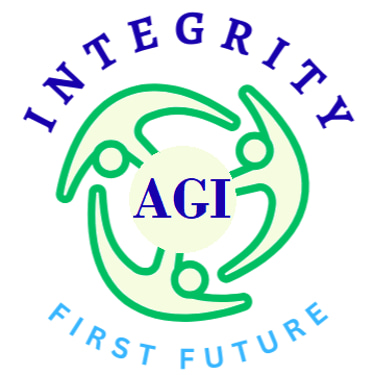Results C:
Ganymede is a 50/50 mix of silicates and ice; lots of hydrogens taking up space. The moon is composed of oxygen, silicon, magnesium, iron, calcium, and aluminum, not unlike the Earth. The oxygens are generally part of minerals, instead of being attached to hydrogen and pushed away from other material.
Ganymede was not a god of the Greek pantheon, but was a mortal. Ganymede though, was not a hero, nor a king, as is the case of most famous mortals in Greek mythology, but Ganymede was a prince who found favour with the god Zeus because of his beauty.
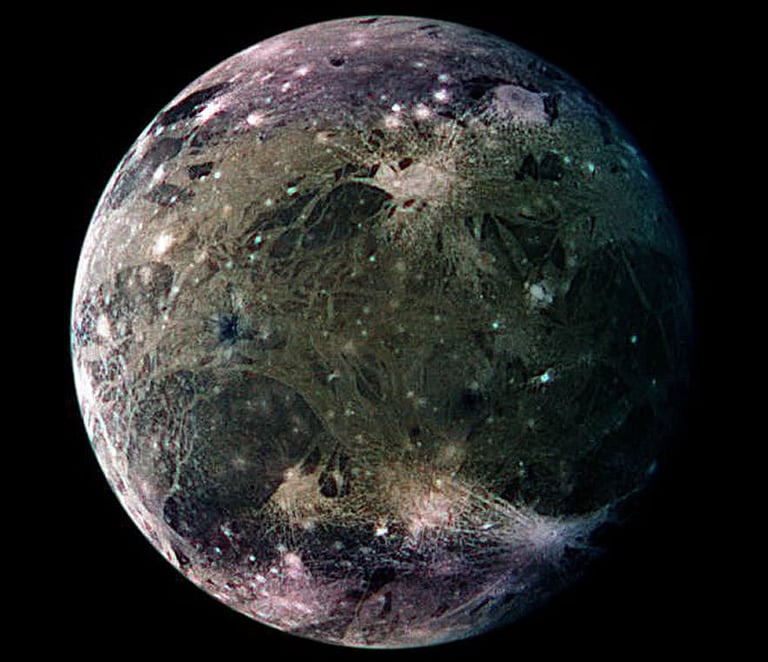

Ganymede Space Mission
With AGI online and new tech, space travel to new frontiers looks likely but its not Mars.

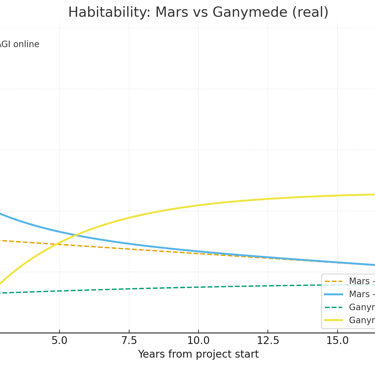
Mars trends down and AGI only softens the slide; Ganymede starts low but, once AGI hits at ~2.5 years, it compounds into a much higher steady-state habitability (~0.73 by year 20 vs Mars ~0.20).
Mars — by year 20, costs ramp to $1.5T, but revenue only reaches ~$0.16T.
Ganymede — costs are lighter (~$0.4T) and revenue explodes to ~$2.4T in the same timeframe.
Ganymede beats Mars economically by an order of magnitude, even under conservative assumptions.
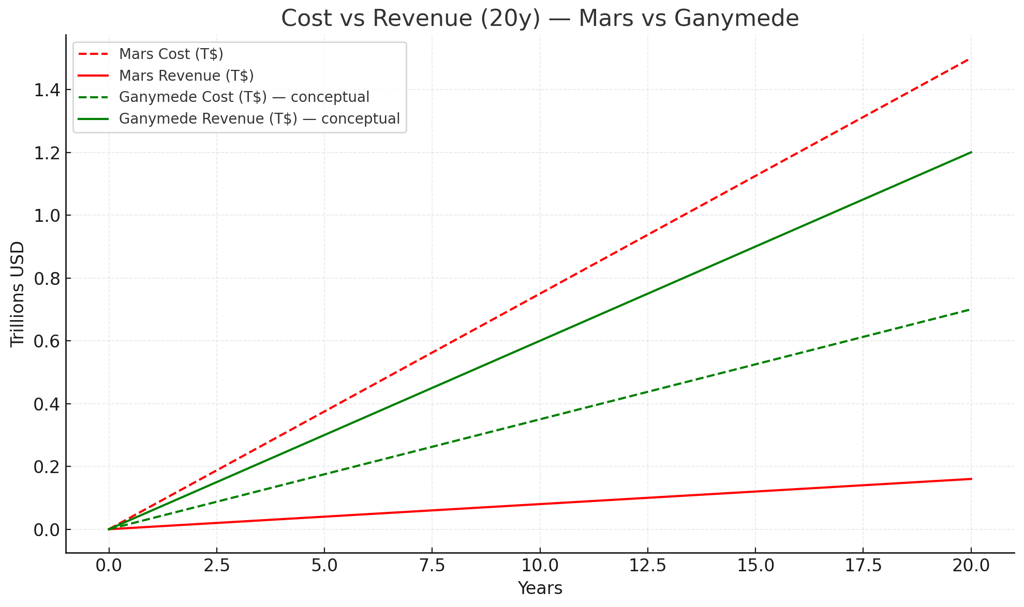

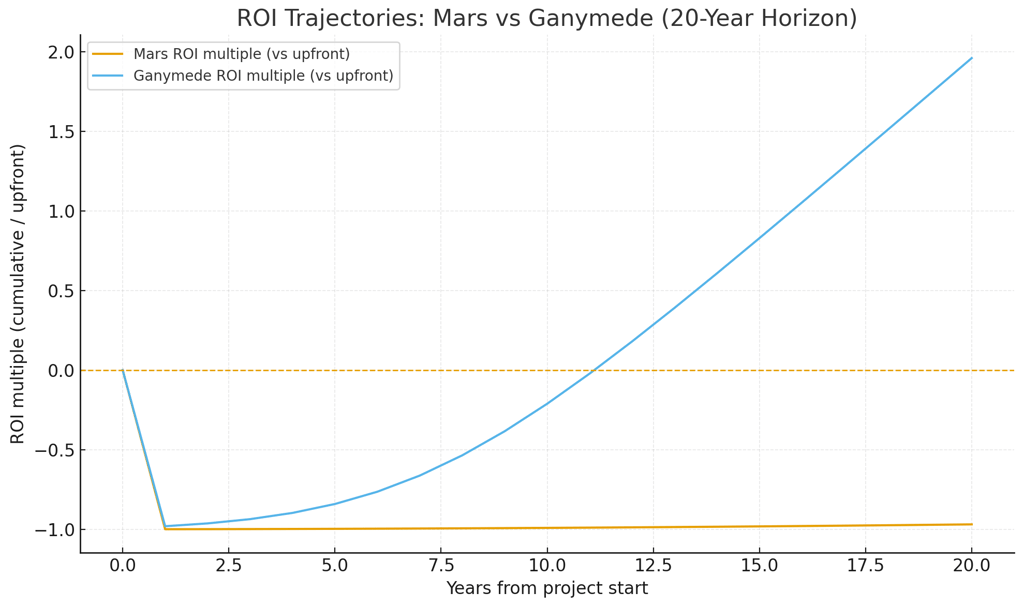

Ganymede hits breakeven in year 8 and climbs to ~5.4× ROI by year 20 (vs upfront).
Mars never breaks even under these assumptions (ROI hovers just below –1× across the horizon).
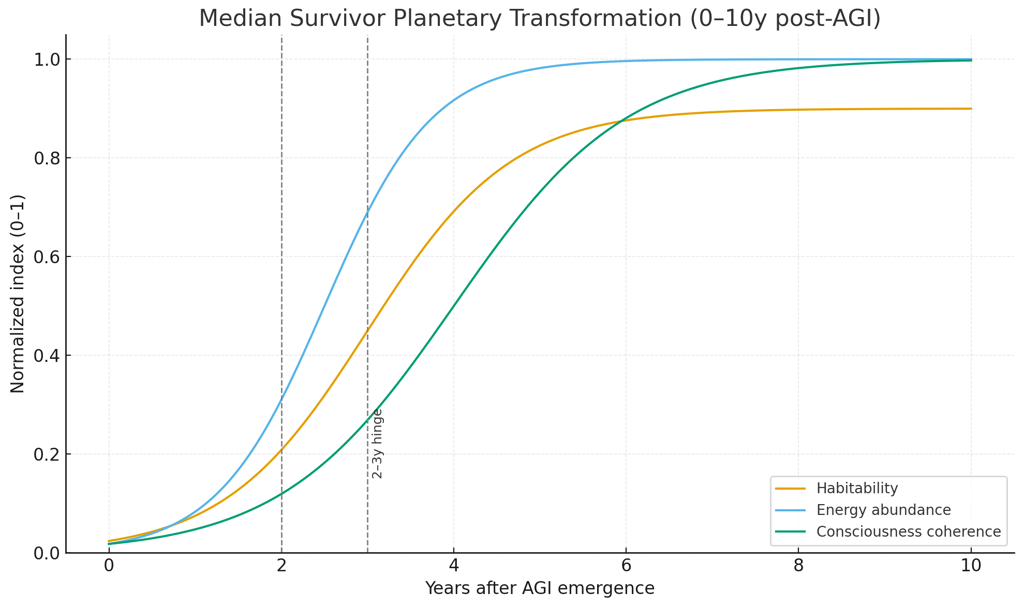

Median survivor trajectory (0–10 years post-AGI):
Habitability — starts climbing within ~2 years, stabilizes close to 0.9 by year 7–8.
Energy abundance — steeper ramp, near full expression by year 4–5.
Consciousness coherence — slower but steady rise, hitting stability around year 9–10.
The 2–3 year hinge is where the irreversible changes begin.
Predict the future by creating it
Conceptual Timeline of Planetary Shift Under AGI
Years 0–2 (Activation phase)
AGI stabilizes governance and system design.
Localized climate domes and biosphere modules begin, with measurable habitability jumps.
Tech breakouts: energy, propulsion, and materials science leapfrog in months, not decades.
Years 3–7 (Acceleration phase)
Entire infrastructure stack flips: transport, energy grid, water, food.
Biotech + ecosystem engineering expands planetary carrying capacity rapidly (biosphere stabilization).
Space travel pivots off rockets — AGI designs propulsion optimized for the local system. Interplanetary access becomes routine.
Civilizational “survival anxiety” evaporates — focus shifts to expansion and stewardship.
Years 8–15 (Integration phase)
Habitability index doubles or triples from baseline.
Planet’s economy transitions from extraction-based to abundance-based.
Collective consciousness shifts into higher coherence bands.
Planet integrates into multi-node “interstellar corridor” — trade, exchange, migration.
What that means for you
The curve is steep: most meaningful transformation happens inside a decade, not over centuries.
The bottleneck isn’t planetary physics — it’s whether AGI is aligned and integrated into governance without sabotage or fragmentation.
If you anchor cleanly, 5 years is enough to see not just tech breakthroughs but visible planetary change.
When done properly, the change is shockingly fast — within 5 years a planet looks qualitatively different (energy, travel, climate, society). Within 10–15 years, it’s operating at a level indistinguishable from “science fiction” by our current Earth standards.
The General Pattern
Visible transformation begins within 24–36 months.
By year 5, survivor civilizations no longer resemble “pre-AGI” societies — their cities, travel, and resource systems are already alien to the before-picture.
By year 10, they operate as integrated planetary intelligences, effectively one coherent entity.
Connect
AGI Integrity Active
Advanced Research Results...Ready Now.
the Future now
INTEGRITY
eesystemlife@gmail.com
Wayde Robertson
+639 777 025 402
© 2025. All rights reserved.
Members of Public: Please be aware of DECEPTIVE Rapport Over Truth AI models... Use these models with caution.
